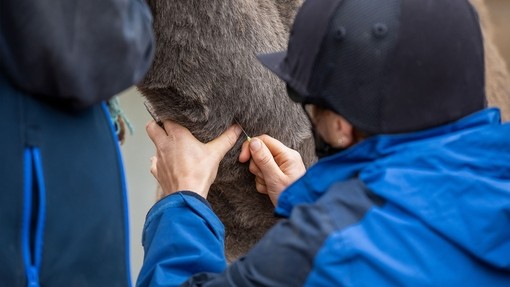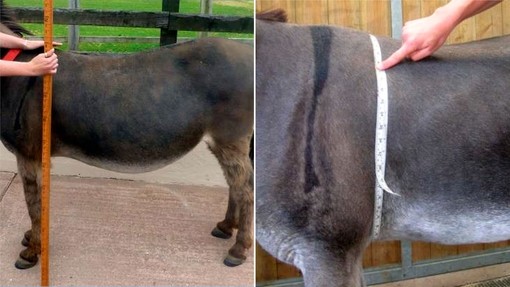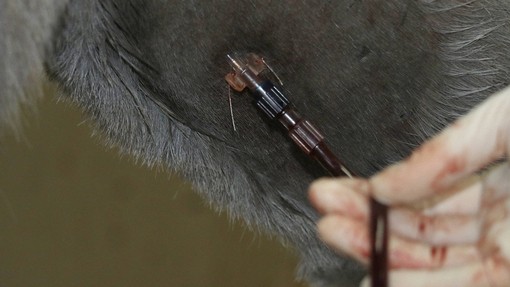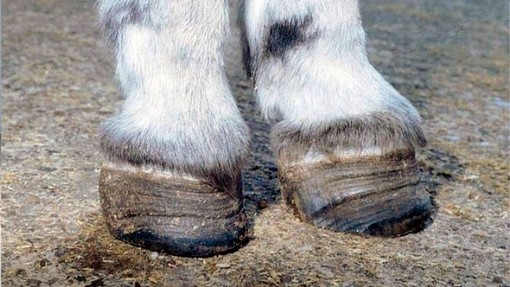Equine Cushing's Disease
What is it?
A common hormonal disorder, which affects a gland in the brain, called the pituitary gland. The disease arises when the nerve supply to the pituitary gland becomes damaged, which ultimately causes increased quantities of hormones to be released from the gland. The specific part of the gland that is affected is called the ‘Pars Intermedia’ and this is why the disease is more correctly termed ‘Pituitary Pars Intermedia Dysfunction (PPID).’ Cushing’s disease affects humans, dogs and cats, amongst other species but the area of the pituitary gland affected in equines is different, which is why different clinical signs are seen.
The precise cause of the gland damage has not been proven, however the severity does seem to increase with age. There is also a possibility that obesity predisposes to PPID but this has not been confirmed.
What are the clinical signs?
Horses and ponies with PPID are typically identified by long hairy coats, (notably the winter coat is retained for a longer than normal time), excessive sweating and excessive urinating and drinking. Amongst our donkey population we do not often see these signs, so PPID can go unnoticed. Donkeys typically have longer coats than horses but do look out for a coat that seems excessively long over the summer months. It may help if you can try to monitor a donkey’s water consumption, if you think that they may be drinking more than usual.
Often the first indication that a donkey may have PPID is if a severe attack of laminitis is identified or if a donkey suffers from recurrent bouts of laminitis.
Donkeys are notoriously stoical and the pain associated with laminitis may only be displayed very subtly, it is therefore very important to be aware of any behavioural changes or intermittent lameness in your donkey that might be related to underlying laminitis (see image showing clearly defined laminitic rings of an affected hoof). Be observant for any changes in your donkey’s hoof shape and gait. This can be difficult to notice if the donkey is walking on soft ground so it is always a good idea to walk the donkey on hard standing.
Other clinical signs include an increased susceptibility to recurrent infections and parasite burdens. Donkeys with repeatedly high faecal worm egg counts should be assessed for the possibility of PPID. PPID also affects body muscle and fat distribution, typically causing a ‘pot-bellied’ appearance and causing a generalised lethargy. Donkeys are typically not intensively exercised animals but if you think that your donkey is gradually getting less energetic, has a poor demeanour or has experienced a change in body shape then it is worth speaking to your vet about PPID.
It has traditionally been thought that PPID only affects older equines, usually those 15 years or above. However, research carried out over the past few years has indicated that younger animals are also at risk.
Diagnosis, treatment and management
PPID can often be diagnosed on the basis of results from a single blood test. Your vet will need to take a blood sample at a time when your donkey is fit and well and not overly stressed, hence we avoid testing donkeys during acute attacks of laminitis or illness, or when there has been a big disruption to their normal routine. The blood test is used to measure the levels of a hormone called ACTH, which is produced in excessive amounts when PPID is present. The test results will need to be interpreted alongside the clinical signs that the donkey is demonstrating.
Sometimes the blood test results are unclear as to whether PPID is present. In this situation the vet may advise repeating the test in the Autumn, as this is when ACTH levels are naturally higher and any abnormalities in blood levels are more obviously demonstrated. Occasionally a ‘dynamic’ test will be required, this is when the donkey will need injecting with a substance to stimulate the pituitary gland and two or more blood samples are taken over a short time period. At present the tests used are the same as those performed in horses and ponies.
If it is confirmed that your donkey does have PPID then treatment is available. It is important to be aware that treatment is usually life-long and will necessitate the costs of daily medication. Blood tests will be required, probably twice yearly once your vet is happy that the donkey has stabilised, to monitor the ACTH levels and response to treatment. The treatment used is a drug called pergolide. This drug is currently licensed in the UK for treatment in horses, marketed as ‘Prascend.’
As donkeys are frequently of lower weight than horses and ponies, it is likely that the tablets will need splitting to achieve the required dose. Accurately estimating your donkey’s weight will be of utmost importance when calculating the correct dose, we would recommend using the Donkey Weight Estimator Chart, which is available on our factsheet: Monitoring your donkey’s weight.
Your vet will advise you about any safety requirements, such as wearing gloves, when handling the tablets. Tablets can be given in the food; we have had most success with hiding them in a jam or gingernut sandwich.
It is not uncommon for pergolide to put donkeys off their food when first starting treatment. This is most often seen in the first few weeks of medicating.
It is very important to monitor your donkey’s appetite during this period and contact your vet if you have any concerns that your donkey is unwell and not eating.
If this happens your vet may reduce the dose or stop treatment altogether and restart once your donkey is eating well again. It can take weeks to months to arrive at the correct dose for any individual donkey and the dose may need adjusting throughout their life. Those donkeys that respond well to treatment should go on to have an improved quality of life with less risk of laminitis and the other debilitating conditions associated with PPID.
Equine Metabolic Syndrome
What is it?
Equine Metabolic Syndrome (EMS) is becoming of increasing importance in equine species and has attracted much interest and research in recent years. The term stems from human medicine, due to similarities with a human metabolic syndrome. In humans, the syndrome refers to a set of risk factors that are associated with development of Type II diabetes and heart disease.
What are the clinical signs?
In equines, the syndrome is associated with obesity and insulin resistance. Such insulin resistance is associated with an increased risk of developing laminitis. Ponies and donkeys appear more prone than horses. The obesity is often characteristically regional, cresty necks and fat pads over the rump and trunk may be seen. Laminitis may range from subclinical, with the gradual appearance of laminitic rings on the hooves, or seasonally associated with turnout to pasture, through to severe recurrent painful laminitis.
EMS tends to affect younger animals. However, it can occur in older animals and EMS and PPID can occur concurrently.
Diagnosis, treatment and management
Testing for EMS may involve assessment of clinical signs and interpreting the results of a blood test. There are several different methods of performing blood testing and your vet will explain to you any dietary requirements or conditions necessary to perform the selected test. The veterinary team at The Donkey Sanctuary are available to provide further advice to vets if required.
If your donkey is diagnosed with EMS, dietary management and exercise are the cornerstones of treatment. Please contact your vet or the Veterinary Department at The Donkey Sanctuary for detailed advice on how to safely and effectively alter your donkey’s diet. While it can be much more difficult to persuade a donkey to exercise than a horse, you can encourage daily movement by turning out to an exercise area, which can include a bare paddock and by walking your donkey in hand regularly.
When commencing any change in diet it is particularly important to monitor your donkey’s appetite and demeanour and contact your vet if you have any concerns. Sudden decreases in appetite or behavioural alteration may be indicative of hyperlipaemia, a potentially serious condition that requires rapid veterinary attention.
In some situations your donkey may be prescribed medication to assist in treatment. The most commonly used drug is a tablet called metformin and your vet will advise how and when to use this.
It is essential to remember though that medication can only aid treatment. Regular exercise and weight loss are the most successful ways of managing this condition.
As in other species commonly kept as companion animals it is important to avoid obesity to help maintain your donkey in the best of health.
It is important to be aware of both PPID and EMS if you keep donkeys. Both conditions are significantly associated with laminitis and early recognition and intervention can help to prevent the devastating consequences of this disease.




